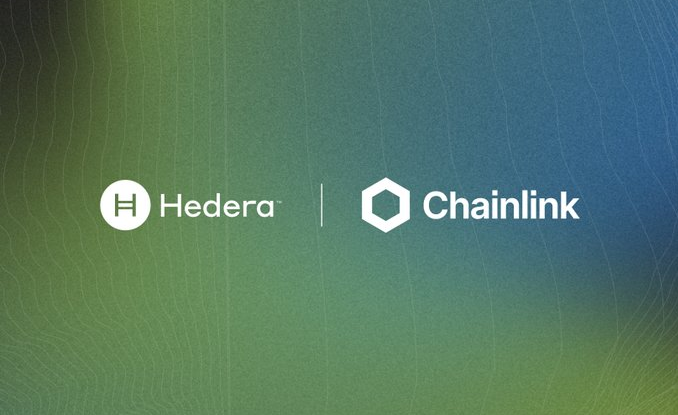How Chainlink CCIP Is Reshaping the Future of the Hedera Mainnet
Recently, the blockchain industry has witnessed a major milestone: Chainlink’s decentralized oracle network has officially launched its cross-chain interoperability protocol (CCIP) on the enterprise-grade public blockchain Hedera Hashgraph (HBAR) mainnet. This collaboration not only marks a technological integration milestone but also has the potential to catalyze the large-scale adoption of institutional blockchain applications.

From Enterprise Chains to a Multi-Chain Ecosystem: Why Hedera Needs CCIP
Hedera Hashgraph, leveraging its Hashgraph consensus algorithm, has long attracted enterprise users with its high throughput (over 10,000 TPS), low energy consumption, and strong compliance credentials (with council members including Google and IBM). However, operating within a single-chain ecosystem has limited its ability to interoperate with mainstream blockchains such as Ethereum and Polygon.
Chainlink CCIP addresses this pain point. As a cross-chain protocol supporting over 40 blockchains, CCIP enables programmable token transfers and incorporates a Risk Management Network (ARM), allowing Hedera developers to securely connect with external ecosystems. For example, enterprise users can transfer tokenized real estate assets on Hedera across chains to an Ethereum DeFi platform for collateralized lending, while simultaneously managing liquidity via exchanges like JuCoin.
Technological Breakthroughs: What CCIP Brings to Hedera
The integration of CCIP is more than a mere bridge tool—it upgrades Hedera’s infrastructure from three dimensions:
-
Arbitrary Message Passing:
CCIP allows smart contracts to trigger cross-chain operations. For instance, an NFT minted on Hedera can simultaneously launch a marketing campaign on Ethereum. -
Plug-and-Play Token Pools:
Developers need not build their own cross-chain bridges. Pre-audited contracts facilitate the multi-chain circulation of tokens such as HBAR and LINK effortlessly. -
Active Risk Management:
An independent ARM node network continuously monitors transactions to prevent incidents like the US$250 million cross-chain bridge attack on the Hedera mainnet in 2023.
Currently, CCIP is being deployed on Hedera in phases. In Q1 2025, the mainnet initially supports cross-chain transfers of LINK tokens, with plans to extend to ERC-20 assets and institutional-grade stablecoins (such as BlackRock’s USDb).
Real-World Impact: Institutional Adoption and Ecosystem Expansion
This technological integration has already yielded visible market effects:
Accelerated Institutional Entry:
The Hedera Foundation disclosed that PayPal is testing a cross-border payment solution based on CCIP, aiming to reduce settlement times from 2–5 days to minutes.
Enhanced DeFi Liquidity:
The Hedera ecosystem DEX SaucerSwap plans to use CCIP to aggregate liquidity from Ethereum and Polygon, potentially boosting HBAR trading volumes.
Increased Developer Growth:
In the past three months, over 300 projects have applied to integrate with CCIP on the Hedera testnet, covering areas such as supply chain finance and carbon credit trading.
For ordinary users, this means lower cross-chain costs and a richer asset selection. For example, on a centralized trading interface, users can convert HBAR on Hedera directly into ETH on Ethereum without manually operating a cross-chain bridge.
Future Challenges and Industry Implications
Despite its promising outlook, the integration of CCIP with Hedera faces two major challenges:
-
Security Verification:
Although the ARM network is theoretically capable of preventing 51% attacks, advances in quantum computing could pose new threats to the Hashgraph consensus. -
Regulatory Adaptation:
Enterprise users on Hedera require robust transaction traceability. This demand is driving CCIP’s development of on-chain regulatory tools compliant with FATF standards.
From an industry perspective, this collaboration signifies that enterprise-grade blockchains are beginning to embrace an open ecosystem. Hedera, which traditionally focused on B2B services, now gains a channel to connect with C-end DeFi users through CCIP, while Chainlink further solidifies its leadership in the cross-chain space. According to Messari, by 2026, the total asset volume managed by cross-chain protocols could exceed US$500 billion, with institutional applications accounting for more than 35% of that volume.




